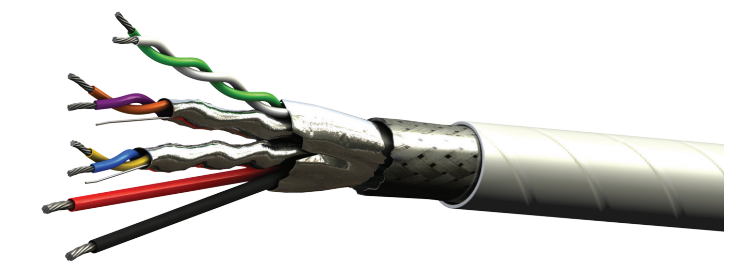In the aerospace and defense industry, the widespread usage of data networks has driven more demand for high-speed USB cables. Universal Serial Bus (USB) cables are a popular data solution because of their unique ability to transfer both power and data. USB is optimized for a variety of demanding applications for aircraft, mobile shelters and ground vehicles, including in-flight connectivity, data transfer, high-definition video and IP cameras.
As new technologies develop and additional applications are identified, the requirement for increased data speeds has challenged interconnect engineers with building faster cables capable of being used at higher frequencies in more rugged environments. To accommodate the trend towards higher frequencies and faster speeds, the market is moving from USB 2.0 towards USB 3.1, which transmits 20x more data.
PIC Wire & Cable offers a portfolio of high-speed PICMates USB 2.0 and 3.1 cables that are designed to meet the standard’s data requirements and are robust solutions for applications requiring low-loss, lightweight and flexible cables.
USB Standard Evolution: Data Cable Speeds
Universal Serial Bus (USB) is an industry-standard that specifies the data speed requirements for USB 2.0 and 3.1 cables, which are the two most widely used USB cables in the aerospace and defense industry. The USB 2.0 standard requires a data transfer speed of 480 Mbps, which is used primarily for data transfer and device charging. In response to the increasing demand for faster data speeds, the USB 3.0 standard (renamed USB 3.1 – Gen 1) was created and requires a data transfer rate of 5 Gbps and is 10x faster than USB 2.0. With a demand for even faster cables, the USB 3.1 – Gen 2 standard was established and requires a data transfer rate of 10 Gbps, which is 20x faster than USB 2.0 and supports more advanced high-definition video and in-flight entertainment applications. USB 3.1 – Gen 2 is backward compatible with USB 3.1 – Gen 1 and USB 2.0.
USB Data Cable Construction
PIC's USB 2.0 cables are designed for 480 Mbps applications. The cable includes one data pair with a 100% foil shield and 80% braided shield that provides robust protection again EMI to ensure signal integrity. Laser markable jacket options include a robust ETFE or light and flexible PTFE tape. USB 2.0 cables are Skydrol resistant, RoHS compliant, and meet or exceed EIA-364-XX and FAA flammability requirements FAR Part 23 and 25, Appendix F.

Figure 1: USB2624 (USB 2.0)
For faster data requirements, PIC Wire & Cable’s USB 3.1 cables are designed for 10 Gbps high-speed applications. USB 3.1 cables achieve 20x the speed of USB 2.0 cables by adding two high-speed data pairs, for a total of three data pairs, to the construction. The tightly twisted, highly shielded pairs (100% foil and 80% braided shields) minimize signal interference and allow the cable to operate at higher frequencies than USB 2.0. Laser markable jacket options include a robust ETFE or light and flexible PTFE tape. USB 3.1 cables are Skydrol resistant, RoHS compliant and meet the FAA flammability requirements of FAR Part 23 and 25, Appendix F.

Figure 2: USB3-2624 (USB 3.1)
USB Connectors and Assemblies
Pairing PICMates USB cables and connectors together provides a robust interconnect solution by optimizing data transmission, electrical performance and reliability. PIC Wire & Cable offers several types of USB connectors to support different applications, including Type A, Type B and Micro-B.
Proper cable assembly is critical to optimizing the full benefits of interconnect technology. PIC’s assembly facility provides tested assembly sets to simplify the system installation process.
View Pre-Engineered Assembly Drawings